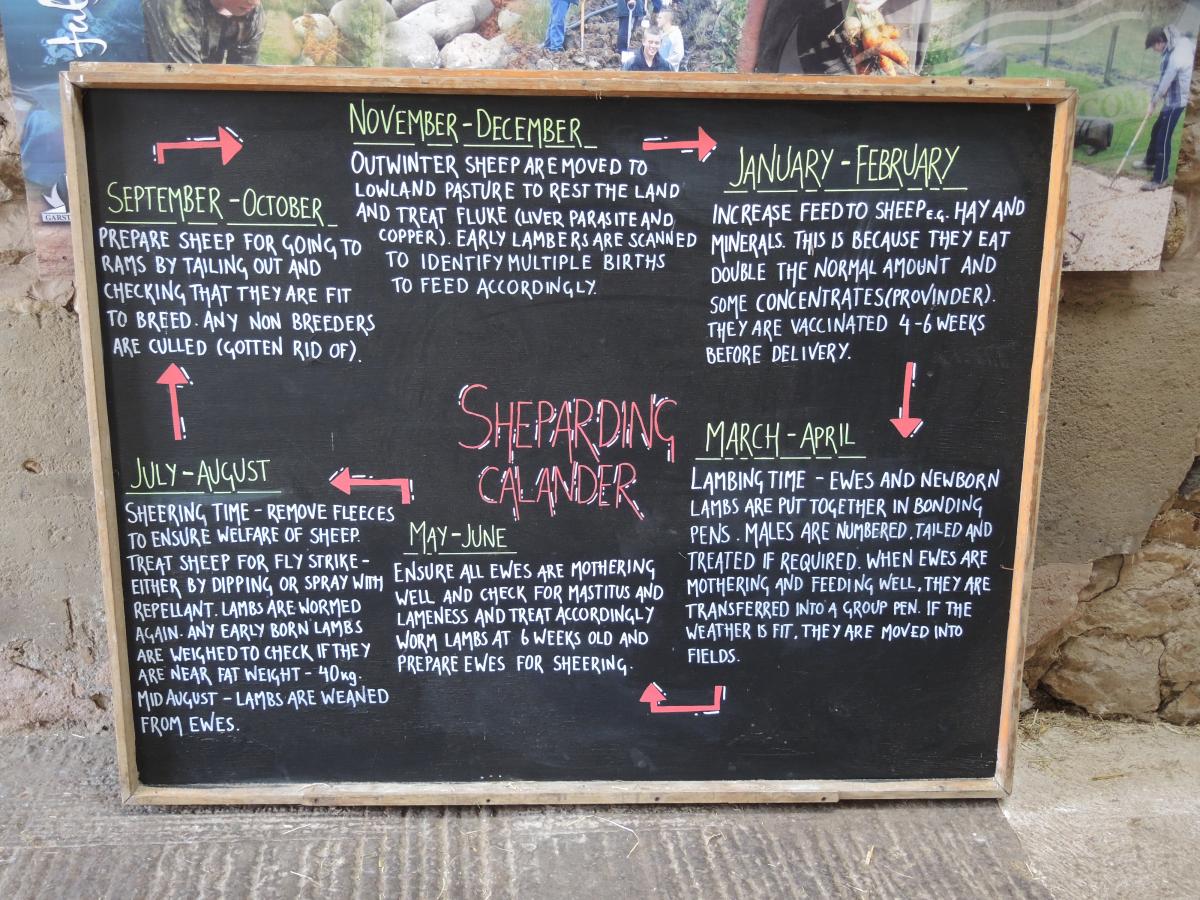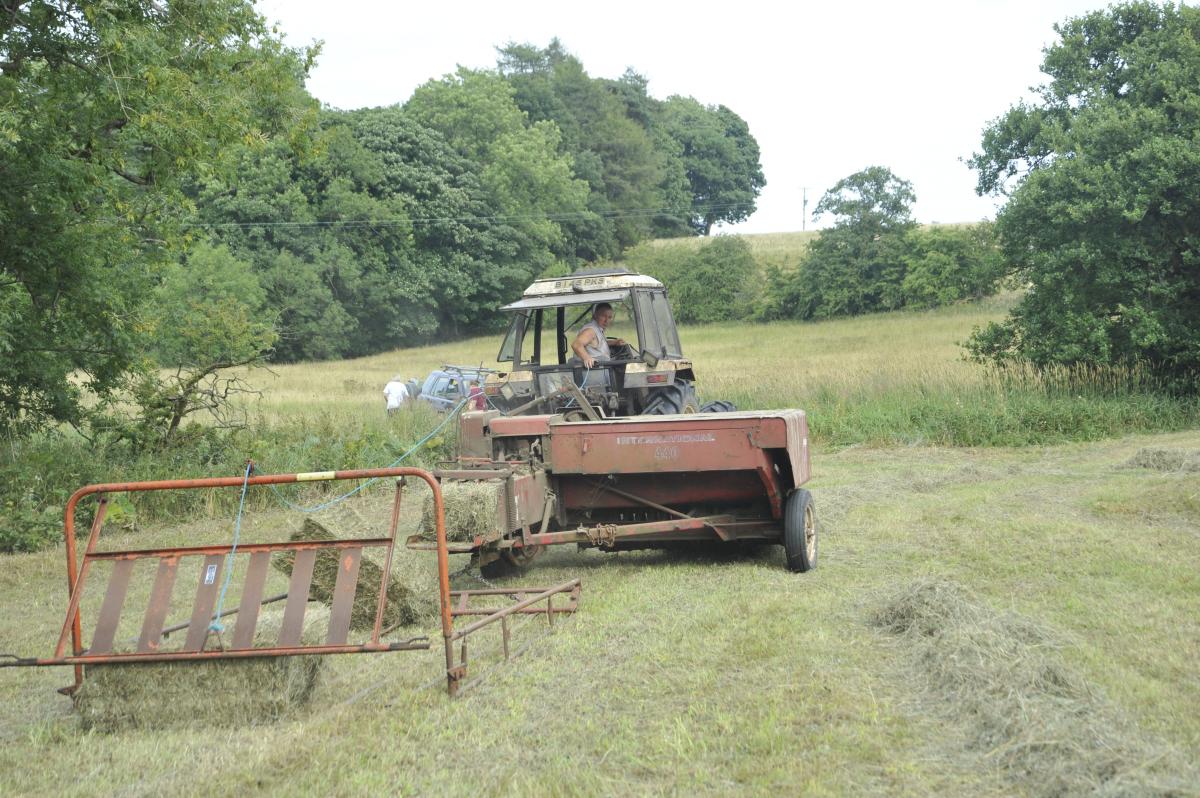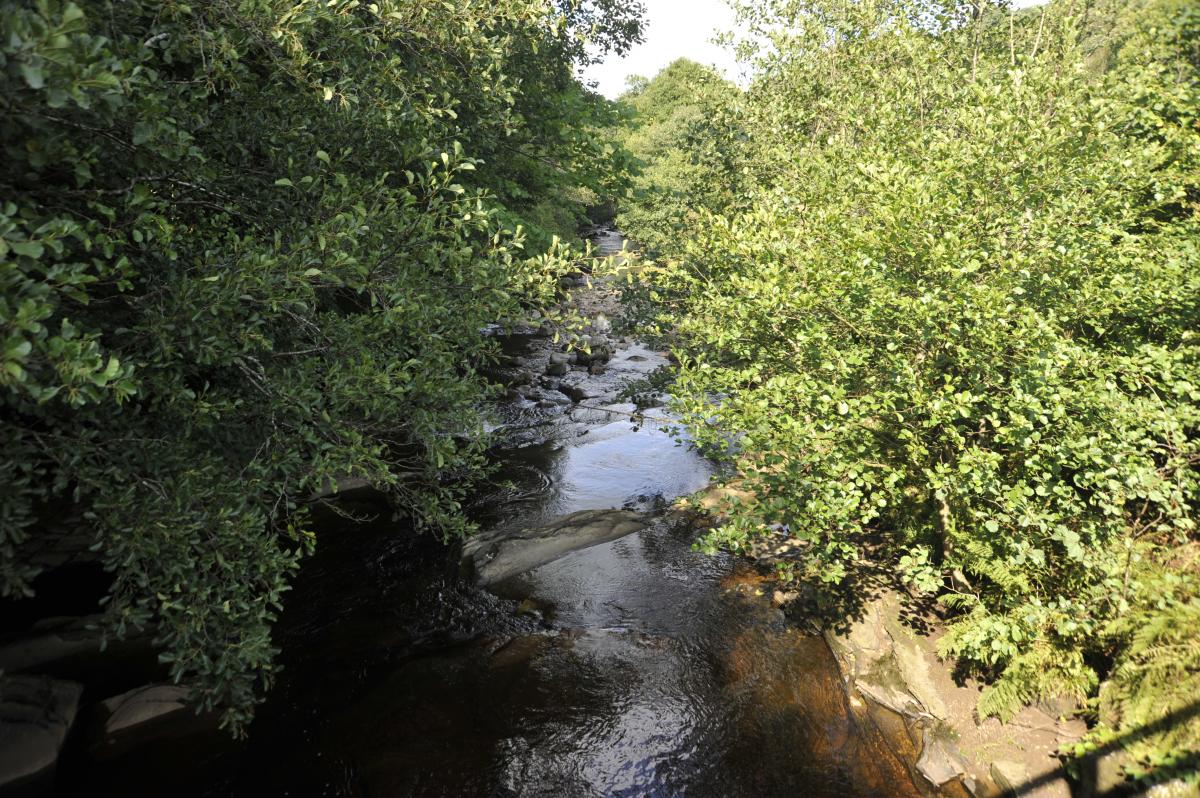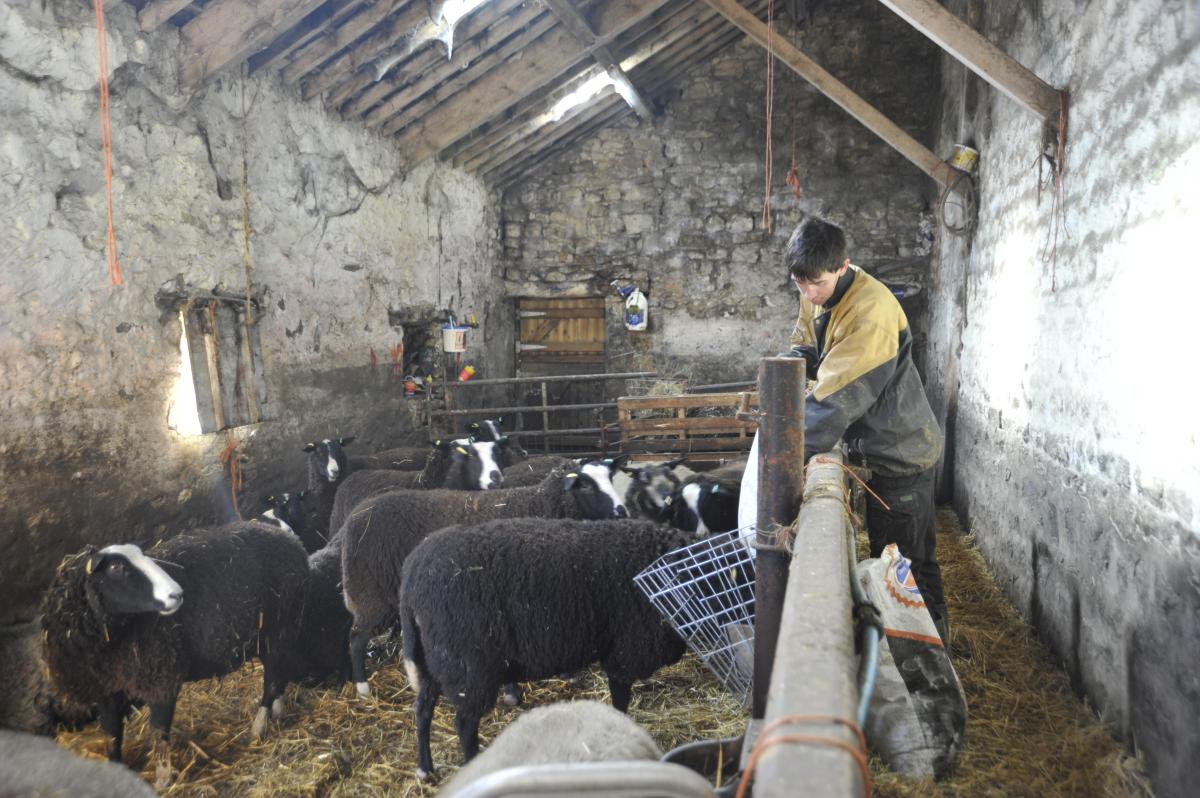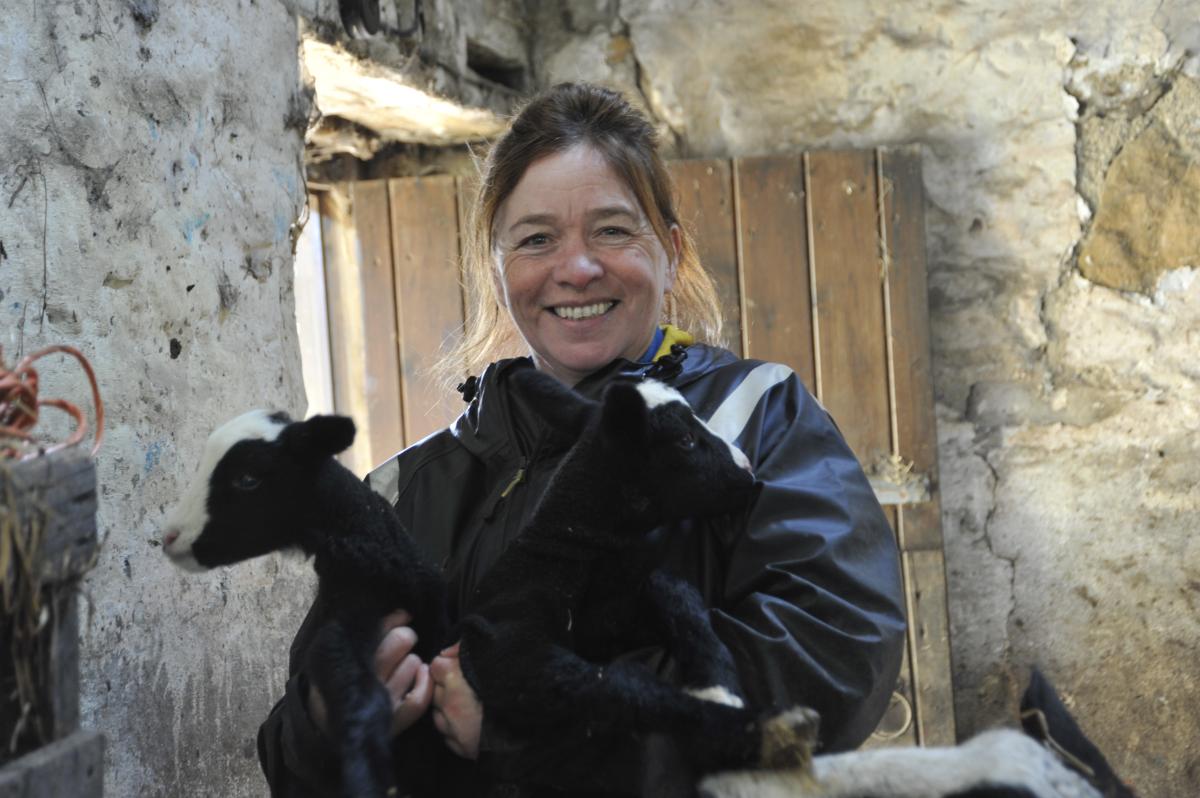 Farming is a 365-days a year vocation requiring tremendous energy, commitment and determination. Farming is at the heart of the Forest of Bowland’s predominantly rural economy and the landscape looks and functions the way it does largely due to the efforts of the area’s farmers.
Farming is a 365-days a year vocation requiring tremendous energy, commitment and determination. Farming is at the heart of the Forest of Bowland’s predominantly rural economy and the landscape looks and functions the way it does largely due to the efforts of the area’s farmers.
The changing seasons inevitably dictate most farmers’ workload, with the available hours of daylight playing a pivotal role in what gets done and when. During the winter months, modern farming is on the whole less labour intensive, but during the summer months, a 12-hour day is often standard – farmers don’t get overtime!
But the amount of daylight is just one of the natural cycles of the seasons that dictate the farming schedule. In this article, we document a year in the life of a handful of Bowland farmers: their trials and tribulations and the triumphs and tragedies along the way.
Spring
Summer
Autumn
Winter
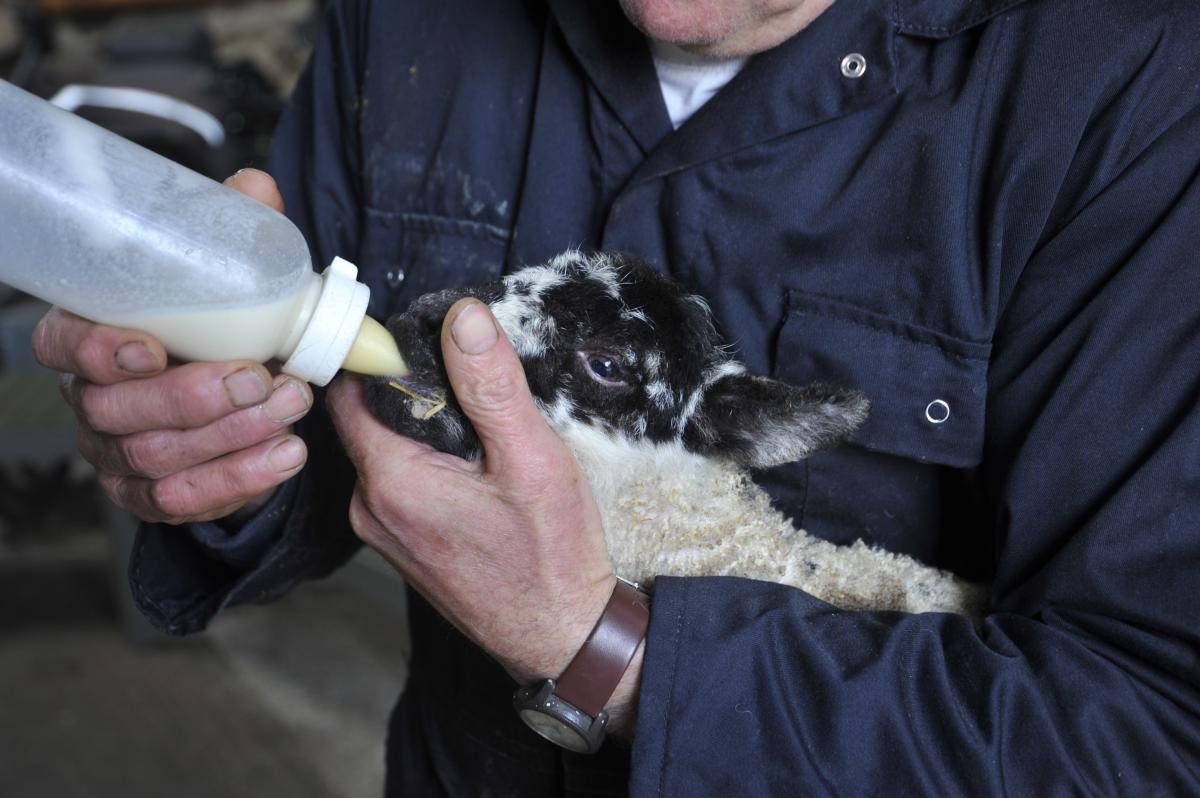 PART 1: SPRING
PART 1: SPRING
NEW LIFE BURST FORTH AS THE COUNTRYSIDE AWAKENS
Up on the western fringe of the National Landscape on the hills above Garstang, Dave and Edwina Miller are trying to keep track of their flock, which will number some 900 sheep by the end of the lambing season. Along with son David, the Millers run a mixed upland farm some 600ft above sea level.
The views stretch for miles across the Wyre Valley and Fylde Plain to the coast and beyond to the Irish Sea. While the conditions for lambing aren’t quite as extreme as those found further east on the highest hill farms in Bowland, lambing generally starts indoors to make sure the next generation of Cobble Hey lambs get off to a flying start.
Once the weather warms up a bit and the lambs have put on some weight, they are turned out onto the grass a
nd quickly start charging around the wide-open fields at Cobble Hey.
As soon as they hear Dave’s quadbike and trailer rumbling down the track, the flock begins something of a stampede towards the feeding stations; it’s like a woolly charge of the Light Brigade.
Their flock is dominated by Dalesbred and Teeswater hybrids for hardiness and wool quality and the majority are born indoors to give them the best possible start in life.
“The ewes and newborn lambs are put together in bonding pens,” explained Dave. “When the ewes are feeding and mothering well, they are transferred into a group pen and after a couple of days, if the weather is fit, they are moved into the fields.
“All our triplets are bottle-fed from birth to ease the pressure on the ewes and we also supplement with sheep nuts once they’re out in the fields. It’s hard work – especially when you get to my age – and I’d like to slow down a bit, but the animals are dependent on you, so you can’t really afford to take it easy – especially at this time of year.”
Dave and Edwina do get a little bit of help with the lambs from willing young volunteers who visit the farm to help with bottle-feeding super-cute lambs before they are released out into the fields once the weather warms up a little. By Easter, lambing is pretty much done and dusted, with most of the lambs and ewes outdoors, playing king of the castle and chasing their siblings across the fields.
MORE SIGNS OF SPRING TO LOOK OUT FOR
Wheatears return to the hills, Ring Ouzels return to the valleys, Hen Harriers begin their ‘sky dancing’ displays in search of a mate. Primulas appear in damp woodland, followed by blue bells and wild garlic. Bats emerge from hibernation and start hunting – often over streams or in wooded areas.
PART 2: SUMMER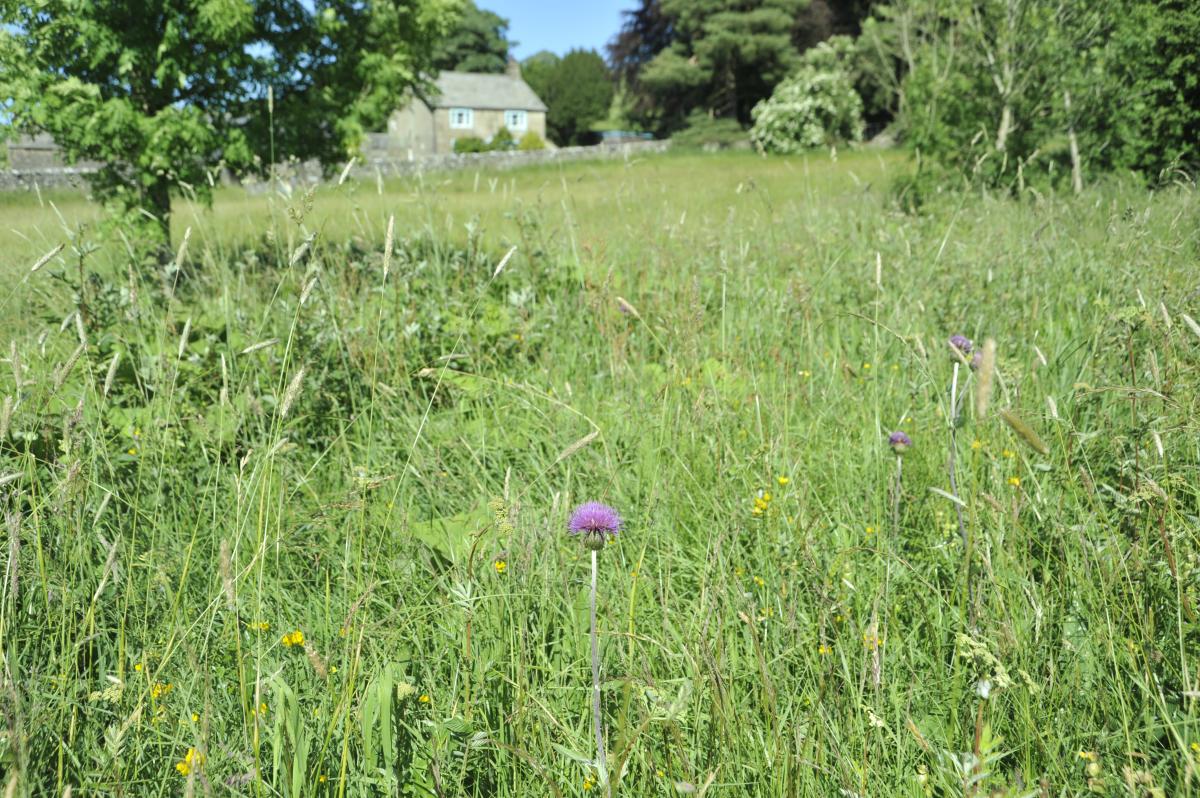
SOWING THE SEEDS OF A WILDFLOWER REVIVAL
On the outskirts of Slaidburn, Bell Sykes Farm’s Coronation Meadows provide living seedbanks that preserve our meadowland natural history.
These wildflower-rich meadows are a Site of Special Scientific Interest (SSSI) – one of the last unimproved flower-rich grasslands in this part of Lancashire. This vulnerable habitat has become increasingly scarce and has largely been destroyed in Lancashire through agricultural intensification.
These six very special meadows encourage the growth of native species such as meadow foxtail and sweet vernal grass along with moisture-loving flowers like great burnet and meadowsweet. The are home to iconic northern upland species including meadow crane’s-bill and melancholy thistle along with a colourful mix of yellow rattle, eyebrights, pignut, buttercups and lady’s mantle.
Peter Blackwell, wife Lynn and daughter Lisa let the grasses grow much longer before cutting and bailing, so that the seeds can develop and then be used to regenerate wildflower meadows elsewhere.
The majority of the crop is used to feed Peter’s own herd and they sell some to local farmers whose livestock seem to appreciate the richness of this 100 per cent natural diet. Contractors cut the remainder and then translocate the rich seed mix to help kick-start the creation of new wildflower meadows across the UK.
So it’s well into July before the fields are mowed and the seed-rich grasses left to dry naturally in the searing heat of high summer.
In the wet – some would say, non-existent – summer of 2017, Peter was forced to make silage as the weather was too unpredictable to guarantee the warm, dry spell required to make proper hay. Conditions were so bad that he didn’t even bother to cut some of the meadows.
The reverse has been true in 2018. With little rain since April, the grasses are much sparser than they would normally be.
“It’s a bit ‘stalky’ this year,” says Peter. “The grasses have put their energy into growing upwards rather than bulking up their foliage nearer the ground. I’d say the yield is about half what we would normally expect.”
Peter’s low intensity approach means haytime remains very much a ‘hands-on’ activity where the whole family and friends pitch in. Son Marcus arrives home from his ‘day job’ in computer hardware design to lend a hand getting the last couple of loads of bales safely into the barn.
The more mechanised approached adopted by larger farms involves rolling the hay into huge round bales each weighing around a tonne and then using a tractor equipped with a spike to load them onto a trailer for storage under huge tarpaulins.
“We did try getting contractors in to make the round bales one year, but if you weren’t careful, they would roll off down the hill,” said Peter. “We ended up fishing a couple out of the brook and one took out a section of dry stone wall, so we gave up on that idea.”
Relying on a 35-year-old tractor and International 440 baling machine, Peter and family make standard bales that are then manually loaded onto a trailer and stacked in a traditional stone outbarn.
It’s hard but satisfying work on a close evening in early August. As we climb through the pasture, collecting the bales as we go, the pastures offer wonderful views across the fields to Slaidburn and up the Hodder valley to Bowland Knotts.
With 108 bales loaded onto Peter’s new tri-axle trailer and Lynn perched somewhat precariously atop of this slightly wobbly edifice, Peter carefully pilots the old Massey to the outbarn overlooking his farmhouse. As he backs the tractor into the oversize doorway, the resident barn owl flees to a nearby tree and Lynn helps guide the trailer into the barn.
Unloading the bales and stacking them up towards the roof is even hotter work in the still, airless barn, but the ride back in the trailer for a well-earned brew and home-made cake at Bell Sykes is ample reward.
“Thirty years ago, our neighbouring farmers would have all helped us get the hay in and then we in turn would have helped them, but times have changed,” says Peter. “It’s hard graft, but we’ve never been afraid of a bit of that and it’s very satisfying to see another year’s worth of winter feed safely stacked up in the barn.
“Modern farming methods mean that a lot of farms spend a small fortune on winter feed – especially in a winter like we’ve had last year – but we’ve got pretty much all the forage we need up in the top barn.”
WHAT ARE CORONATION MEADOWS?
Established by HRH Prince Charles in 2013 to mark the 60th anniversary of the Coronation of Her Majesty the Queen, the Coronation Meadows are a network of some 90 protected wildflower meadows which maintain a living seedbank to provide a springboard for the restoration and creation of new sites across the country.
VISIT BELL SYKES FARM
Bell Sykes Farm is within easy walking distance of Slaidburn. Simply cross the River Hodder via the bridge at the edge of town and follow the footpath signs upstream to reach the meadows. The best time of year to visit is June. A footpath map can be downloaded from the Forest of Bowland National Landscape Website at: https://www.ydmt.org/resources/files/bellsykeswalk0613hires_1_.pdf
PART 4: AUTUMN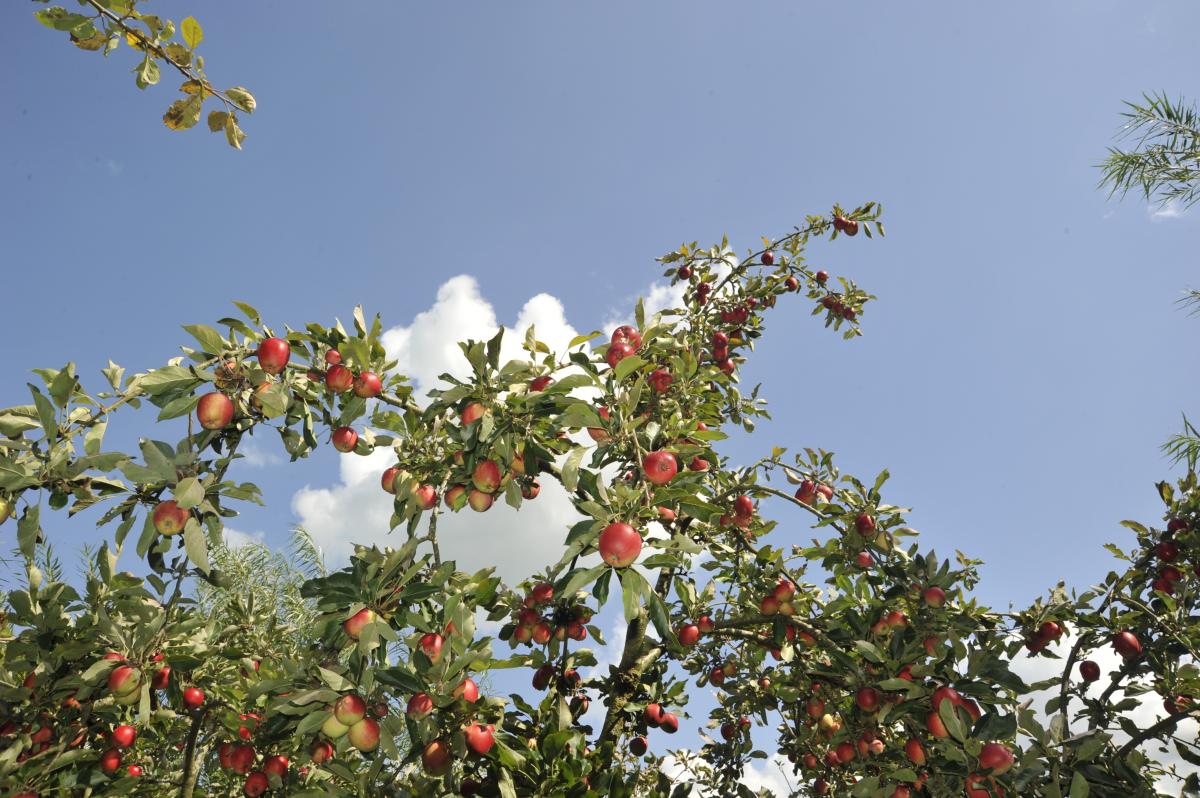
HARNESSING THE HARVEST TO STEM THE TIDE
In the enchanted valley of Roeburndale, sustainable farming and land management methods are being employed to preserve rare species and stem a destructive cycle of flooding after decades of soil degradation.
On the northern fringes of the National Landscape, there is a steep-sided, densely wooded valley that feels like another world. Verdant, overgrown, peaceful and slightly unkempt, setting foot in Roeburndale is like stepping back in time.
There’s a slight sense of abandonment here – as if the custodians have simply got out of the way to give Mother Nature some extra breathing space. By modern farming standards, it’s something of lost world, but to its owner: Dr Rod Everett, it’s paradise.
Backsbottom Farm covers some 230 acres of moorland and woodland on the western flank of this enchanting valley and it’s all farmed along permaculture principles: 100 per cent organic and minimal to zero chemical and pharmaceutical input.
Rod has travelled the world giving talks on permaculture yet enjoys a simple life which he shares with wife Jane on this isolated farm perched near the head of the valley some 400 feet above sea level.
Power is provided via a 3-kilowatt wind turbine and the water from natural springs. Much of the upper slopes are given over to organic fruit and veg, and Rod’s four rambling orchards now comprise some 200 different apple varieties, with a few sheep grazing contentedly among the rambling trees.
The orchards are a living seedbank that should ensure the survival of rare strains of apple from Lancashire, Yorkshire and Cumbria and this year they produced a bumper crop.
“We’re looking at three times the usual yield this year,” sai
d Rod. “We really need to work out how to make use of them without any wastage. So now they are all scratted (pulped) and pressed to make cider and then when ready, converted to craft cider vinegar. This will mature for two years in oak barrels. Be ready in 2021 for a special treat. The apple pressings are converted to silage for the sheep.”
The entire farm buzzes with insect life, from rare butterflies and dragonflies, to bees, hoverflies and hornets. A solitary Horseshoe bat is hawking insects above the river in broad daylight. Overhead, buzzards mew on the thermals above the dense woodland canopy, while flycatchers, redstarts, nuthatches and tree-creepers flit around under the dense woodland canopy.
As they mature, Rod’s orchards offer provide additional benefits to the wider landscape – which have moved up his list of priorities in recent years – and as October ushers in the first storms of autumn, Rod’s focus returns to the river.
Above the treeline, the views stretch out over the Wenning Valley to Hornby Castle and beyond to the Lakeland Fells on the horizon. Below the farm, a steep track dives into the wooded slopes of the Valley, where the River Roeburn sparkles in the warm autumn sunshine.
And yet after heavy winter rainfall, this pretty babbling brook can mutate into something altogether more threatening – a raging torrent capable of felling trees, moving massive boulders and re-engineering the very landscape through which it flows.
In August 1967 the course of the river was diverted by around 150 yards by a devastating flood caused by a summer cloudburst. A wall of water demolished 13 houses, cottages and barns, deposited 24-tonne rocks 400 yards down-river, took out every bridge in the valley and killed dozens of livestock.
There was an ominous echo of this natural disaster in December 2015, when the torrential downpour of Storm Desmond triggered another huge spike in the river level and catastrophic flooding further down the Lune catchment. The river reached similar levels following heavy rainfall in 2017.
In a bid to prevent a repetition of these environmental traumas, Rod has implemented a series of natural flood prevention measures on his land. In-river training structures redirect the flow so that seasonal floodwaters re-contour and reinforce the natural banks, while peat and blanket bog restoration and a series of swales and dams on the edge of the moorland above hold the water higher up the catchment, delaying its descent towards the river channel and smoothing out sudden spikes in the water level.
The legacy of these recurring floods has had a profound effect on the riparian wildlife. Fish stocks have never really recovered and the land remains vulnerable to erosion with every significant rise in water levels.
“The eels haven’t returned and we seem to have lost the bullheads and sticklebacks that we used to spend hours catching as kids,” said Rod, who is now applying for funding to extend the scope of the project so that the entire Roeburn catchment is managed more sensitively to prevent further damage.
But there are signs that the tide is beginning to turn.
“In terms of biodiversity we’ve recorded 18 species of butterfly and 10 different species of bumble bee. We’ve seen hornets return to the valley which is an indication of a healthy population of hoverflies and the mushroom crop this year has been simply amazing.
“It’s still early days, but the small-scale flood prevention measures we’ve put in seem to have had a positive impact and by replacing some of the trees lost in the recent floods, the apple trees – which each consume a lot of water – may be playing their part too.”
VISIT BACKS BOTTOM FARM
A public right of way runs almost the entire length of Roeburndale and Rod and Jane welcome visitors who are keen to find out more about Permaculture and they run regular permaculture courses. There is also an eco-holiday cottage and camping barn in the valley. Find out more at: www.rodspermaculture.co.uk. and riverroeburn.uk
PART 4: WINTER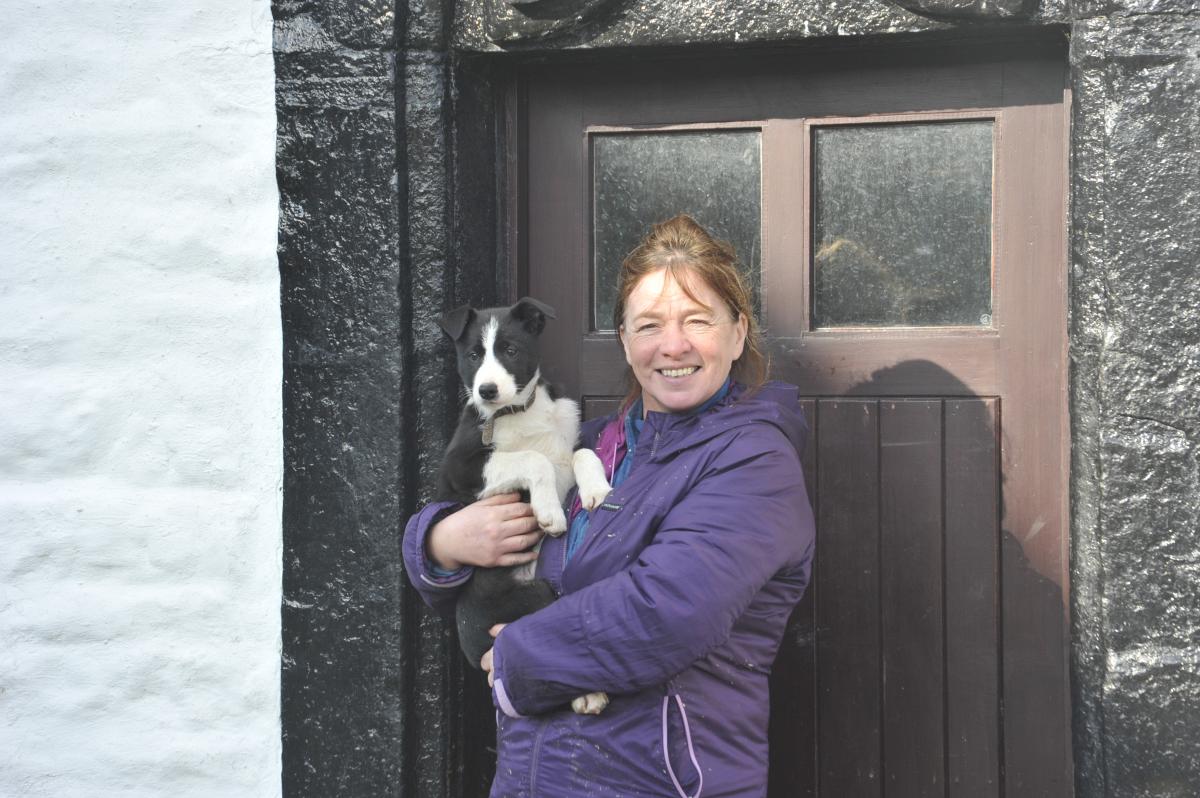
IN THE BLEAK MIDWINTER SOMETHING SMALL AND WOOLLY STIRS
While the first signs of spring may be appearing in the valleys, on the hill farms up on the Bowland Fells, winter retains its icy grip. Yet the plaintive cries of the first tiny lambs are only a heartbeat away. On Bowland’s lower lying farms in the valley bottoms, the Christmas decorations are barely back in the loft when lambing begins early in February.
It’s an especially demanding time of year for sheep farmers, who may have to function on just a few hours’ sleep a night for the next month or so. Ewes tend to lamb late at night or early in the morning and in wet weather, the new-born lambs can really struggle to survive outdoors. For this re
ason, much of the early lambing happens indoors in barns and lambing sheds – offering some protection from the elements and a fighting chance of survival.
Sheila Mason farms at Keasden Head – high on the hills above Bentham on the northern slope of the Bowland Fells, where spring isn’t in any particular hurry to arrive.
“Because it’s so cold outside, and there’s so little grass at this time of year, we tend to lamb our zwartbles inside in pens. They are better off bedded up and we can keep our eye on them. We have cameras on the pens and if there are any new arrivals during the night, I like to get up and make sure they are all fine and give them a once-over. By morning they are usually suckling well and absolutely fine.
“But when the Swaledales come into lamb later in March, it’s quite a different matter because they are giving birth out on the fells. If it’s bad night, I wonder what I’m going to find in the morning, because it can be a scene of absolute devastation after a really wet and windy night.
“Lambing is a pretty full on time for us: when you aren’t checking for new arrivals you’re constantly checking the feed and making sure the new-borns are suckling properly.
We have to help out some ewes with a bit of supplementary bottle-feeding and occasionally a ewe will reject one of her lambs so we try to get a more experienced foster mum to adopt her.”
“I wonder what I’m going to find in the morning, because it can be a scene of absolute devastation after a really wet and windy night”.
And so the farming year comes full circle. In another few short weeks, as the days lengthen and the green shoots of spring return to lowlands, the fields will soon be full of gambolling lambs.
Over on the western fringe of Bowland at Cobble Hey, Dave and Edwina will be tidying up the gardens and preparing to welcome the first excited schoolchildren to bottle-feed their lambs. In Slaidburn, Peter will be eagerly awaiting the first wildflower blooms and keeping his fingers crossed for a bumper seed crop, while Rod will be looking forward to the first delicate bluebells peeping up from the forest floor.
The farming year has been unfolding like this every year for decades and this natural timetable – largely dictated by the progression of the seasons – is unlikely to alter anytime soon.

